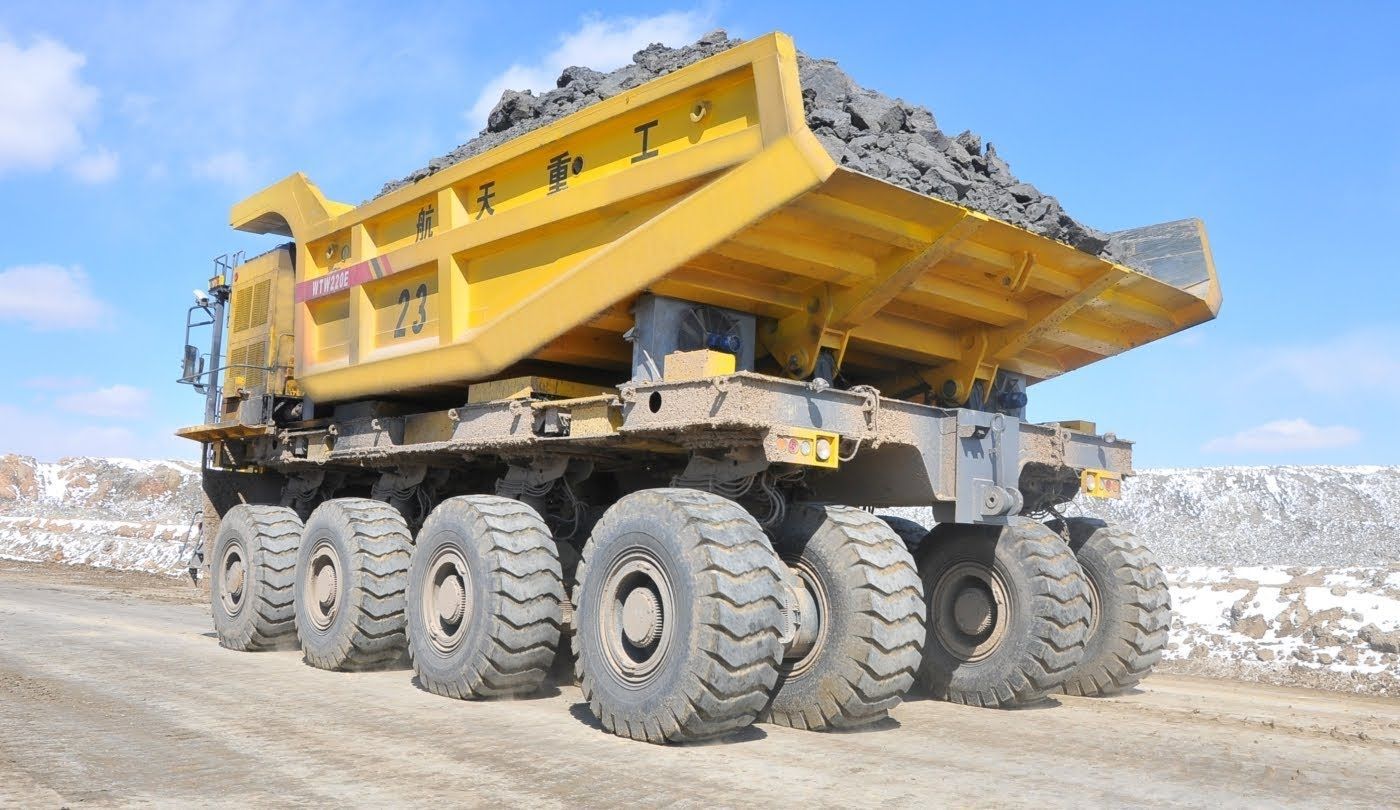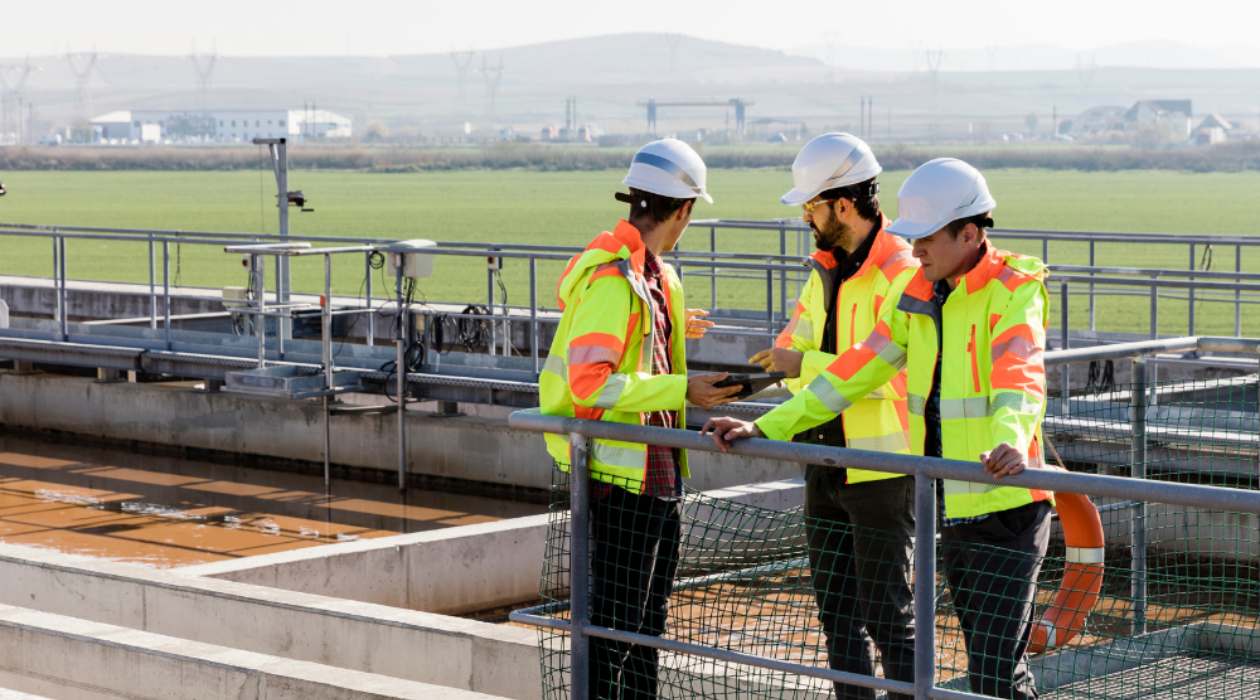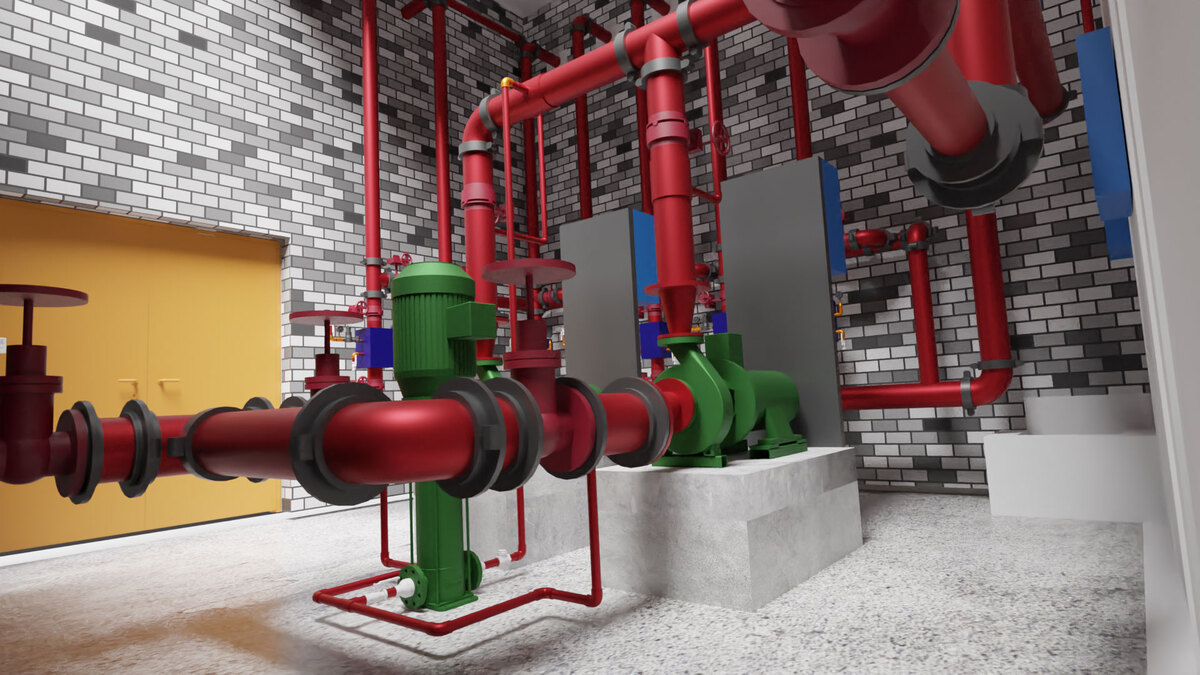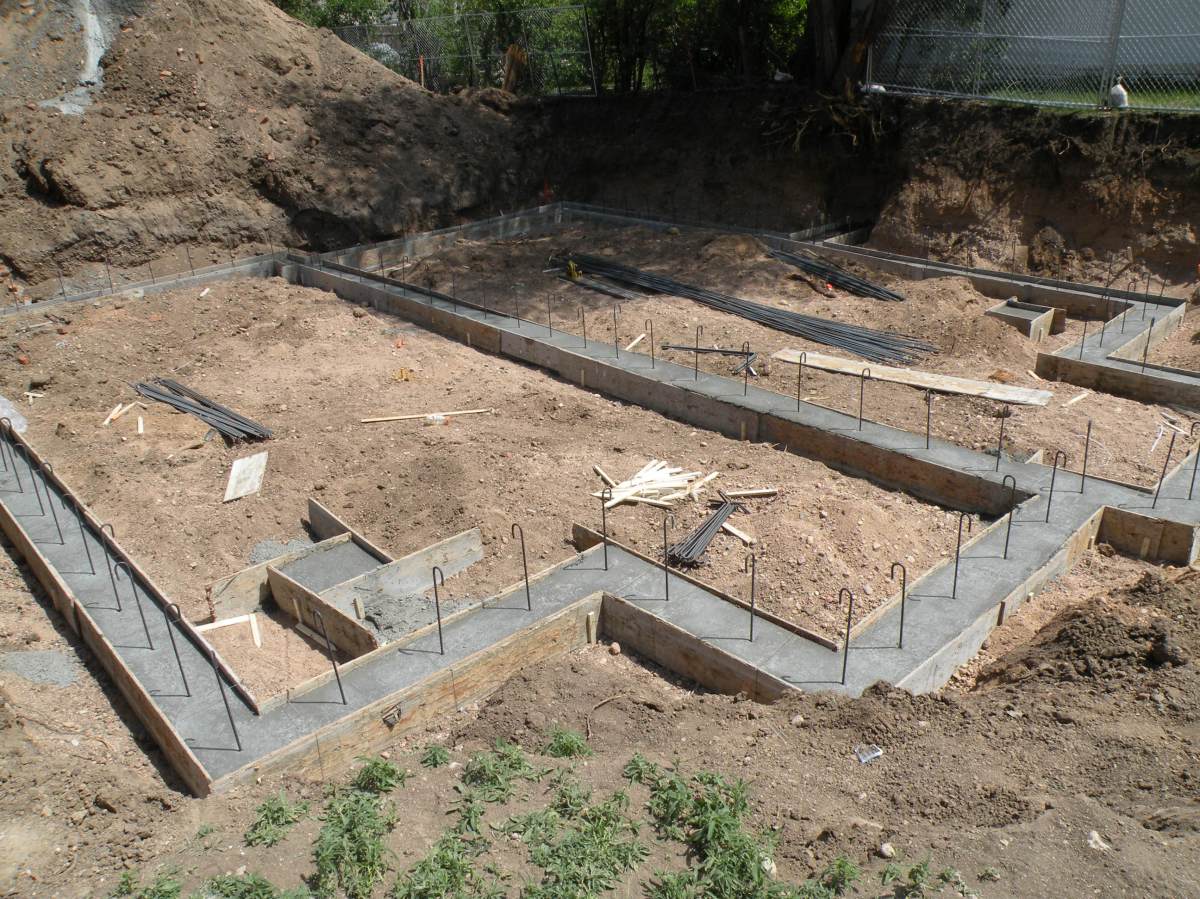Home>diy>Building & Construction>What Is The Biggest Construction Vehicle


Building & Construction
What Is The Biggest Construction Vehicle
Modified: January 24, 2024
Discover the largest construction vehicle used in building construction. Find out what it is and how it's used in various construction projects.
(Many of the links in this article redirect to a specific reviewed product. Your purchase of these products through affiliate links helps to generate commission for Storables.com, at no extra cost. Learn more)
Introduction
When it comes to the world of construction, size matters. From towering skyscrapers to vast infrastructure projects, the construction industry relies on powerful machinery to get the job done. And among these heavy-duty machines, there are some standouts that truly take the meaning of “big” to a whole new level. In this article, we will explore the biggest construction vehicles that dominate construction sites around the world.
These massive machines are marvels of engineering, built to handle the toughest tasks and move mountains of dirt, rocks, and debris. Whether it’s digging deep foundations, clearing land, or lifting heavy materials, these vehicles play a pivotal role in shaping our cities and landscapes.
From excavators to bulldozers, cranes to dump trucks, each of these construction vehicles has its own unique set of features and capabilities. Let’s dive into the world of giant construction vehicles and discover what makes them so essential to the construction industry.
Key Takeaways:
- Giant construction vehicles, from excavators to cranes, are the powerhouse of the construction industry, shaping our cities and landscapes with their immense capabilities and engineering prowess.
- These colossal machines, such as bulldozers and dump trucks, are essential for tasks like earthmoving, leveling, and material transportation, playing a pivotal role in the success of construction projects worldwide.
Excavators
When it comes to earth-moving, there is no rival to the mighty excavator. These colossal machines have become synonymous with construction sites and are known for their ability to dig, scoop, and move massive amounts of earth with ease.
An excavator typically consists of a long boom arm fitted with a bucket on the end. This bucket can be attached to the arm through a variety of mechanisms, allowing for different movements and tasks. With the ability to rotate 360 degrees, an excavator can reach almost any spot on a construction site.
Excavators come in various sizes, ranging from compact models for smaller projects to giant machines that can weigh over 100 tons. The larger excavators are equipped with powerful engines capable of generating immense hydraulic force, enabling them to tackle even the toughest digging tasks.
Excavators are used for a wide range of construction activities, including digging trenches, excavating foundations, demolishing structures, and clearing land. Their versatility and ability to handle different attachments, such as breakers, grapples, and buckets of various sizes, make them indispensable on construction sites.
In addition to their digging capabilities, some excavators are equipped with extendable arms, enabling them to reach even greater heights and depths. This makes them ideal for tasks such as mining, dredging, and even underwater excavation.
The sheer power, versatility, and range of tasks that excavators can handle make them an essential piece of equipment in the construction industry. Whether it’s creating the groundwork for a new building or shaping the terrain for a massive infrastructure project, these giant machines are the backbone of construction sites all over the world.
Bulldozers
When it comes to moving massive amounts of earth and debris, no machine can match the power and efficiency of a bulldozer. These colossal machines are equipped with a large, flat blade at the front that is capable of pushing, leveling, and clearing various types of materials.
Bulldozers are designed to work in rough terrains and extreme conditions. They feature impressive traction and stability, thanks to their heavy-duty tracks that distribute the machine’s weight evenly. This allows them to operate on uneven or muddy surfaces without getting stuck.
Equipped with a powerful engine and hydraulic systems, bulldozers can exert immense force and control while performing their tasks. They can push large mounds of soil, rocks, and debris, create roads and paths, and level the ground for construction projects.
Modern bulldozers come with advanced technology, such as GPS systems and laser-guided grade control, which provide precise measurements and accuracy to ensure efficient and accurate grading and leveling. This technology enables operators to achieve the desired results with minimal time and effort.
Bulldozers also offer versatility in terms of attachments. They can be equipped with rippers at the back, which are used to break up hard or compacted surfaces, allowing for easier excavation. Additionally, bulldozers can be fitted with special blades, such as angle blades or semi-U blades, for specific grading requirements.
These machines are commonly used in a wide range of construction activities, including site preparation, land clearing, road construction, and mining operations. They are instrumental in creating level surfaces, removing obstacles, and shaping the terrain to meet project specifications.
With their robust build, impressive power, and ability to handle various terrains, bulldozers are vital in the construction industry. Whether it’s clearing land for a new development or creating access routes for transportation projects, bulldozers are the go-to machines for efficiently and effectively moving earth and debris.
Cranes
When it comes to lifting heavy objects, cranes are the true giants of the construction world. These towering machines are designed to hoist and move heavy materials with precision and efficiency. Whether it’s placing steel beams for skyscrapers or lifting large machinery into place, cranes play a crucial role in construction projects of all sizes.
Cranes come in a variety of types and sizes, each suited for specific tasks. The most common type is the mobile crane, which can be easily transported to different construction sites. These cranes are mounted on a truck or a crawler, allowing for easy movement and flexibility.
The main component of a crane is the boom, which is a long, extendable arm that can lift and move loads. The boom can be raised, lowered, and rotated to reach the desired position. Cranes also come equipped with a hook or a grab attachment that securely holds the load during lifting.
One of the key features of cranes is their incredible lifting capacity. They can lift loads ranging from a few tons to hundreds of tons, depending on the size and type of crane. This immense lifting power allows cranes to handle heavy construction materials, machinery, and components with ease and precision.
Cranes are operated by highly trained professionals who have a deep understanding of the machine’s capabilities and safety protocols. They carefully coordinate their movements to ensure the safe and efficient lifting of heavy loads. With advanced technology and controls, operators can precisely position loads and handle them with exceptional accuracy.
In addition to their lifting capabilities, cranes are often equipped with telescopic booms or jibs, which can extend to impressive heights. This makes them ideal for tasks such as erecting tall structures, installing wind turbines, or working on large infrastructure projects.
Overall, cranes are an indispensable tool in the construction industry, providing the means to lift and move heavy objects safely and efficiently. They empower construction projects to reach new heights and tackle complex tasks with ease. From small-scale building projects to monumental infrastructure developments, cranes are the giants that make it all possible.
Dump Trucks
When it comes to transporting large quantities of materials on construction sites, dump trucks are the workhorses of the industry. These robust vehicles are specifically designed to carry and unload heavy loads of loose materials such as dirt, gravel, sand, or debris.
Dump trucks are characterized by their open-box bed, which can be hydraulically lifted to dump the contents. This allows for quick and efficient unloading of materials, making them essential for construction projects that involve earthmoving, excavation, or site preparation.
The size and capacity of dump trucks vary, ranging from smaller models with a few tons of carrying capacity to larger ones capable of hauling loads of over 40 tons. The larger dump trucks are commonly used in mining operations or for transporting large quantities of materials over long distances.
One of the key advantages of dump trucks is their ability to operate on rough and uneven terrains. They are equipped with sturdy suspension systems and large, durable tires that can handle off-road conditions. This makes them ideal for construction sites that require traversing uneven or unpaved surfaces.
Dump trucks also come in various configurations, such as standard dump trucks, articulated dump trucks, and off-highway dump trucks. Articulated dump trucks have a pivot point between the cab and the trailer, allowing for greater maneuverability in tight spaces. Off-highway dump trucks are designed for more challenging terrains, with higher ground clearance and larger tires.
Operators of dump trucks require specialized training to ensure safe and efficient operation. They must be skilled in properly loading, securing, and unloading materials to prevent accidents or damage to the equipment. Additionally, they must have a thorough understanding of the vehicle’s capabilities, such as its weight limitations and operational controls.
Overall, dump trucks are vital in the construction industry for transporting materials from one location to another. Their ability to handle heavy loads and navigate rugged terrains makes them indispensable in projects that involve excavation, earthmoving, or bulk material handling. Without dump trucks, construction sites would struggle to effectively transport the materials needed to complete the job.
Read more: What Is The Biggest Bed Size
Backhoe Loaders
When it comes to versatility on a construction site, backhoe loaders take the spotlight. These powerful machines combine the capabilities of a loader and a backhoe, making them essential for a wide range of tasks.
At the front, a backhoe loader is equipped with a loader bucket, similar to that of a front-end loader. This bucket is perfect for loading and moving materials such as gravel, soil, or debris. The backhoe, located at the rear of the machine, consists of a digging bucket on an articulated arm. It is used for digging trenches, excavating, and performing other earthmoving tasks.
The loader bucket of a backhoe loader can be raised and lowered, and its arms can be extended or retracted to reach different heights and distances. This allows for efficient loading and unloading in various situations, making it a versatile tool for handling materials.
The backhoe component of the machine offers impressive digging capabilities. The arm can be rotated 180 degrees, giving operators the flexibility to dig trenches or holes at different angles. The digging bucket attached to the arm can be replaced with specialized attachments, such as a breaker for breaking up concrete or a grapple for handling rocks or logs.
Backhoe loaders are designed to be maneuverable and compact, making them suitable for working in tight or confined spaces. They are ideal for urban construction projects or sites with limited access, where larger machines may not be able to navigate or operate efficiently.
In addition to their earthmoving capabilities, backhoe loaders often come with additional features, such as a hydraulic thumb for picking up objects, a ripper for breaking up hard soil, or a tilt function for angled digging.
These machines are commonly used for a wide range of construction tasks, including digging trenches, loading and unloading materials, excavating foundations, and landscaping. Their versatility and compact size make them a favored choice for smaller construction projects and urban environments.
Overall, backhoe loaders are remarkable machines that combine the functions of a loader and a backhoe. Their ability to handle different tasks efficiently and maneuver in varied spaces make them a valuable asset on construction sites. Without backhoe loaders, many construction projects would face challenges in excavating, loading, and completing various earthmoving tasks.
The biggest construction vehicle is the Bagger 293, a giant bucket-wheel excavator used for mining operations. It holds the Guinness World Record for the largest land vehicle.
Wheel Loaders
When it comes to heavy lifting and material handling on construction sites, wheel loaders are an essential powerhouse. These versatile machines are equipped with a large, front-mounted bucket that can scoop, lift, and transport a wide variety of materials.
The defining feature of wheel loaders is the large, articulated arms that enable the operator to manipulate the bucket with precision. The wheels on these machines provide mobility and allow them to navigate easily on different types of terrain, making them highly efficient in transporting materials across a construction site.
Wheel loaders are designed for heavy-duty operations, with robust construction and powerful engines that provide excellent digging and loading capabilities. The size of the bucket can vary depending on the model, ranging from a few cubic yards to over 20 cubic yards, allowing for significant material handling capacity.
One of the key advantages of wheel loaders is their ability to handle a wide range of materials, including soil, gravel, sand, rocks, and even logs. They are often used in construction projects involving earthmoving, site preparation, and material handling.
Wheel loaders are commonly used in various construction activities, such as loading and unloading trucks, stockpiling materials, and moving aggregates across the site. They are also equipped with features like quick couplers, allowing for easy attachment changes and the use of specialized attachments for different tasks.
Modern wheel loaders come with advanced technology and features to improve efficiency and safety. This includes features like automatic bucket leveling, which ensures that the load is leveled automatically as the bucket is lifted. Some models also have integrated weighing systems, allowing operators to accurately measure material quantities.
Operators of wheel loaders are trained to handle these powerful machines safely and effectively. They must possess a solid understanding of the loader’s capabilities, operational controls, and safety protocols to ensure smooth and efficient operation.
Overall, wheel loaders are an indispensable tool in the construction industry. Their ability to handle heavy loads, maneuver in tight spaces, and transport materials quickly and efficiently make them a valuable asset on any construction site. Without wheel loaders, construction projects would face significant challenges in material handling and site preparation.
Construction Excavators
When it comes to heavy-duty digging and excavation, construction excavators are the go-to machines on construction sites. These powerful beasts are designed to handle the toughest tasks, capable of digging deep into the ground and moving large amounts of material.
Construction excavators consist of a tracked or wheeled base and a rotating platform known as the “house” which holds the operator’s cab and control panel. At the end of the house, there is an extendable boom arm fitted with a bucket or attachment, allowing for various digging and lifting operations.
Excavators are commonly used for digging trenches, excavating foundations, demolishing structures, and clearing land. They are versatile machines equipped with powerful engines and hydraulic systems, enabling them to handle a wide range of tasks with precision and efficiency.
The buckets attached to the excavator arm come in different shapes and sizes, depending on the desired function. They can range from standard digging buckets to specialized attachments, such as grapples for handling debris or hydraulic breakers for breaking up concrete and rocks.
One notable feature of construction excavators is their ability to rotate 360 degrees. This allows the operator to reach any spot on a construction site without having to reposition the entire machine. This versatility makes excavators highly efficient in confined spaces and areas where other machines may have difficulty accessing.
Excavators also often come equipped with additional features to enhance their capabilities. This can include a hydraulic thumb for added precision when handling objects, a grading blade for smoothing surfaces, or a long-reach arm for extended reach in deep excavations or underwater projects.
Operators of construction excavators require specialized training to safely and efficiently operate these machines. They must have a deep understanding of the machine’s controls, safety protocols, and the specific tasks involved in excavating and digging operations.
Overall, construction excavators are essential machines in the construction industry. Their ability to handle heavy digging, precise maneuverability, and versatility with various attachments make them the backbone of many construction projects. Without construction excavators, digging foundations, clearing land, and shaping the terrain would become significantly more challenging and time-consuming.
Articulated Trucks
When it comes to hauling large amounts of material on construction sites, articulated trucks are the workhorses of the industry. These off-road vehicles are designed to transport heavy loads over rough terrains, making them indispensable in earthmoving and construction projects.
Articulated trucks are characterized by their unique design, with a hitch joint that allows for flexibility between the front and rear sections of the vehicle. This articulated joint enables the truck to navigate uneven surfaces and tight turns, providing exceptional maneuverability in challenging environments.
The rear section of the truck features a dump bed, which can be hydraulically raised to unload the material it is carrying. This dump bed is commonly used for transporting loose materials such as gravel, soil, sand, or rock. The large capacity of the dump bed allows for efficient transportation, reducing the need for multiple trips.
One of the key advantages of articulated trucks is their ability to handle steep slopes and rough terrains. They are equipped with heavy-duty suspension systems and large, durable tires that provide excellent traction and stability on uneven surfaces. This makes them ideal for construction sites that require hauling materials over challenging landscapes.
The size and capacity of articulated trucks can vary, with some models capable of carrying loads exceeding 30 tons. These trucks are often utilized in large-scale earthmoving projects, mining operations, and infrastructure developments.
Operators of articulated trucks require specialized training to handle these powerful machines safely and efficiently. They must possess a deep understanding of the truck’s capabilities, loading capacities, and operating controls to ensure the proper transportation and dumping of materials.
Articulated trucks work hand in hand with other heavy equipment on construction sites. They are commonly used in conjunction with excavators, loaders, and bulldozers to efficiently move materials from one location to another. The seamless coordination between these machines allows for smooth and effective operations on the construction site.
Overall, articulated trucks are crucial in the construction industry for their ability to transport heavy loads over challenging terrains. Their maneuverability, large capacity, and durability make them invaluable in projects that involve large-scale material transportation, earthmoving, or mining operations. Without articulated trucks, efficiently moving materials across construction sites would become significantly more cumbersome and time-consuming.
Motor Graders
When it comes to ensuring smooth and level surfaces on construction sites, motor graders are the champions of precision. These powerful machines are designed to fine-grade and level various types of terrain, making them essential for road construction, land grading, and construction site preparation.
Motor graders feature a long, flat blade positioned between the front and rear wheels. The operator can adjust the height and angle of the blade to precisely control the grading and leveling process. With their ability to make subtle adjustments, motor graders achieve accurate and uniform surfaces, essential for safe and efficient construction projects.
The blades of motor graders can be tilted, rotated, and articulated to allow for precise grading in different directions. Some motor graders even offer additional features like scarifiers or rippers at the back, which help loosen compacted soil or break up rocks for improved grading results.
One of the key advantages of motor graders is their excellent maneuverability. The configuration of the articulating joint between the front and rear sections of the grader allows for tight turns and easy navigation on construction sites. This enables operators to efficiently grade large areas while avoiding obstacles and maintaining accurate control.
Motor graders come equipped with comfortable operator cabs, providing excellent visibility of the working area. This visibility, combined with precise controls and instrumentation, allows operators to maintain accuracy and ensure that grading is done to the required specifications.
Motor graders are commonly used in various construction activities, including road construction, land grading, creating drainage ditches, and shaping the terrain for construction projects. They play a crucial role in achieving a level and smooth surface, which is essential for safe and efficient transportation and the construction of structures.
Operators of motor graders require specialized training to operate these machines effectively. They must have a deep understanding of the blade controls, grading techniques, and the ability to interpret project plans and grade stakes.
Overall, motor graders are an indispensable tool in the construction industry for achieving precise grading and leveling. Their ability to create smooth and accurate surfaces ensures the safety and efficiency of construction projects. Without motor graders, road construction projects or site preparations would face significant challenges in achieving uniform and even surfaces.
Conclusion
Construction sites are bustling hubs of activity, where colossal machines come to life to shape our cities and landscapes. From excavators to bulldozers, cranes to dump trucks, backhoe loaders to motor graders, each of these construction vehicles plays a vital role in the industry.
Excavators dominate the scene with their ability to dig deep into the ground and move massive amounts of material. Bulldozers excel at pushing and leveling, clearing the way for construction projects. Cranes proudly lift heavy loads with their impressive lifting capacity and reach. Dump trucks prove their worth in hauling and unloading large quantities of materials. Backhoe loaders showcase versatility by combining the functions of a loader and a backhoe, making them ideal for various tasks. Wheel loaders masterfully handle heavy loads and transport materials with ease. Articulated trucks conquer rough terrains while carrying massive loads. Motor graders achieve precision in grading and leveling, ensuring smooth surfaces for construction projects.
Each of these construction vehicles is a testament to human ingenuity and engineering prowess. They are built to withstand the toughest conditions, working tirelessly to move mountains of dirt, shape landscapes, and construct towering structures. Without them, the construction industry would not be able to accomplish what it does today.
Operators of these machines play a vital role in their safe and efficient operation. Their expertise and knowledge contribute to the success of construction projects, ensuring that the machines are used to their full potential and according to the highest safety standards.
As construction continues to evolve, so do these massive vehicles. The introduction of advanced technology and features enhances their capabilities and improves efficiency on construction sites. From GPS systems to hydraulic controls, these innovations streamline operations and allow for greater precision in tasks.
In conclusion, the biggest construction vehicles are the backbone of the construction industry. They undertake formidable tasks, transforming landscapes and bringing ambitious projects to life. From the excavation of foundations to the transportation of materials, these machines are indispensable in creating the infrastructure that defines our modern world.
So, the next time you see these giants at a construction site, marvel at their power, appreciate their capabilities, and acknowledge the immense contribution they make to our built environment.
Frequently Asked Questions about What Is The Biggest Construction Vehicle
Was this page helpful?
At Storables.com, we guarantee accurate and reliable information. Our content, validated by Expert Board Contributors, is crafted following stringent Editorial Policies. We're committed to providing you with well-researched, expert-backed insights for all your informational needs.














0 thoughts on “What Is The Biggest Construction Vehicle”